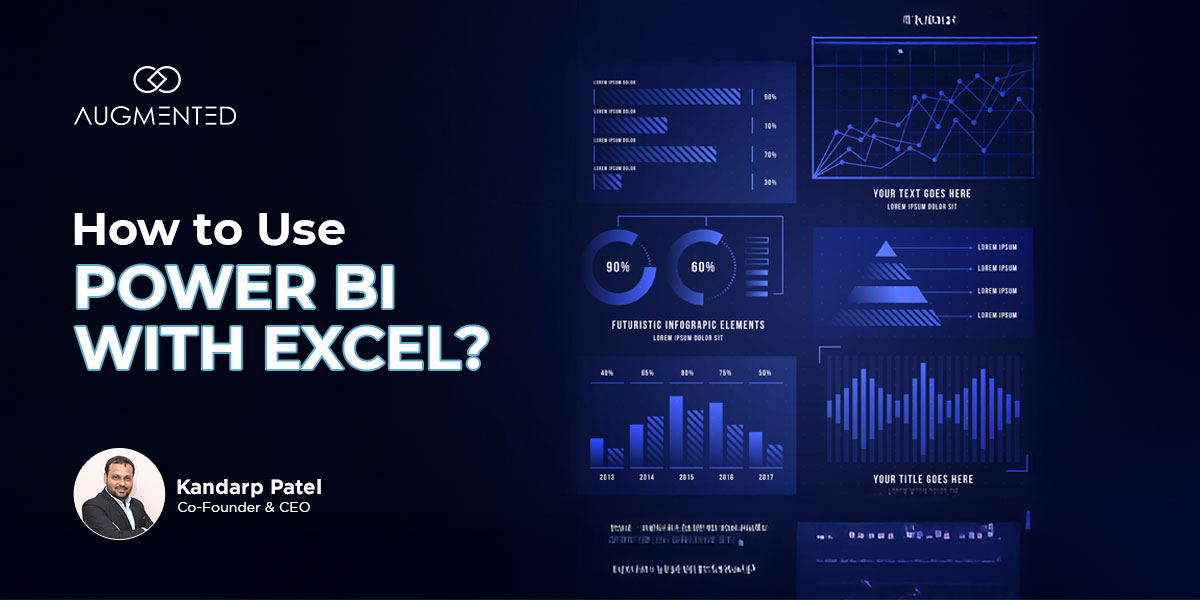Choosing the right data migration tool is like choosing the best ice cream. All look similar but taste quite different.
However, there's one key difference: the money you invest. You can get bin an ice cream scoop if you don’t like it but you cannot practically reverse data migration once done.
You need to study each tool in detail and choose the one that aligns with your objectives.
Sounds like too much work? Well, worry not.
As data migration experts, we know the ins and outs of all tools. We've curated this list just for you to make the most out of your data migration investment.
Let's get in!
What are Data Migration Tools?
Data migration tools are software applications that transfer data from an on-premise system to a new one. Transferring data from one system to another is called data migration.
Data migration tools guarantee that the migration process manages and safeguards your data by:
- Data Extracting
- Data Preparing
- Data Transforming
- Data Cleaning, and
- Loading the data
This is done to ensure that the migrating data is appropriate and meets its new storage location requirements. But the question is why are 57% of organizations actively migrating to the cloud?
Let’s have a look.
Why Do Businesses Need Data Migration Tools?
According to Statista, worldwide data generation will exceed 180 zettabytes by 2025, with an average of 328.77 million terabytes daily.
With these stats, it becomes obvious that businesses need more space and better platforms to store their ever-growing data. Here are some more reasons why businesses update their storage systems.
1. Technology Upgradation
Businesses often upgrade their software and infrastructure to keep up with technological advancements. Data migration helps them make this switch smooth, preserve critical data and minimize disruptions.
2. Data Consolidation
Businesses are often mistaken to be highly systematic to the outside world. But internally, they are a medley of data and information.
This scattered data across various systems can help businesses evolve, but only when managed efficiently. So, businesses choose to consolidate all their data with data migration.
3. Security and Compliance
Data privacy regulations are becoming stricter. Data migration becomes paramount for businesses to comply with data protection regulations and secure their data.
Data migration solutions help organizations achieve both goals. It moves data to new systems while following the regulations and keeping sensitive information safe throughout the migration process.
4. Business Expansions
Business acquisitions, mergers and even organic growth may create a mess of disorganized data. Here, data migration helps businesses merge the disintegrated data from multiple sources. Despite a few data migration challenges, the process becomes smooth and secure.
With vast amounts of data accumulating, managing and maintaining it becomes expensive and difficult for many businesses. Data migration solutions such as migration tools offer several other benefits, such as cost reductions and data-driven insights.
Keep reading to find ways to eliminate the tedious and risky process of manual transfer.
5 Advantages of Data Migration Tools
Finding what you need amongst heaps of data sets can be a nightmare. So, how can you make your data migration process a breeze? Data migration tools are the solution.
But there is more to this! Data migration tools are essential to consolidate all your messy data into one organized central system. But what exactly are the benefits of having everything in one place?
Let’s have a look.
1. Data Quality and Consistency
You might not be aware, but your business is very likely to have duplicate, incomplete and inconsistent data entries. With such poor-quality data spread across systems, it is too difficult to get a clear picture of what's happening in your business.
Data quality impacts your company's decision-making. Data migration tools often have built-in validation and cleaning features. You can leverage these to:
- Ensure accurate and error-free data
- Identify and rectify duplicates, incomplete and inconsistent data entries
- Maintain high-quality data
- Provide data migration automation capabilities
- Seamlessly move data to a new system
A centralized platform enhances the data quality of scattered data across platforms. Moreover, it reduces the need for manual intervention and speeds up the migration process.
2. Better Data Security
Security is a big concern for business, especially with big data. With cyber incidents being the leading risk to businesses globally for 2024, maintaining data security is crucial.
Data migration tools offer you with robust security features and encryption protocols to protect your data.
- The tools protect sensitive information during the data migration process.
- So even though your data is intercepted during the transfer, it remains secure and unreadable.
- Tools are designed with industry standards and regulations, such as GDPR (General Data Protection Regulation.)
- The tools adhere to the regulations to help businesses protect their data from security breaches.
Thus, your tool provider fulfills all the necessary security and compliance requirements, letting you focus on other business tasks.
3. Cost Savings + Better ROI (Return on Investment)
Which company wouldn’t want to boost its profit margins and achieve a better ROI? None! Investing in a data migration tool can result in significant cost savings and more profitable ROI. How?
- Automating data migration reduces labor costs. Instead of spending countless hours on migration tasks, your team can focus on other things.
- Migration tools mitigate the risk of data loss and errors, being a costly affair.
- Tools transfer your data without loss or corruption of the data.
- Pay only for what you use with cloud storage and avoid upfront costs like software licenses.
- The providers cover the cost of maintenance, upgrades and security, saving you a lot of money.
Efficient and easy-to-adopt tools help you quickly adapt to new systems. You get more time to market new products while saving money.
4. Time-Saving
Migrating large volumes of data from one system to another takes a lot of time. Data migration tools help move the data to a new system quickly and safely.
Automation is the core of many data migration tools and has many benefits to offer.
- Tools streamline the process, thus improving efficiency and saving time.
- They handle all the repetitive and complex tasks, such as data extraction, transformation and more.
- The tool helps businesses move terabytes of data quickly, reducing downtime and disruption to operations.
- With built-in consistency and integration check features, tools help reduce the time required for post-migration verifications.
Time is crucial for all business processes, like manpower and resource management. With migration tools and data migration solutions, you can focus on other relevant tasks.
5. Increased Business Efficiency
Higher profit margins, productivity and efficiency are key factors in defining a successful business. Data migration tools help achieve this by handling a lot of work efficiently and securely.
- Migration allows businesses to see their data more clearly and the time to grow by making better decisions.
- The beauty of these tools and technologies lies in their continuous upgrades and enhancements, which provide a reassuring outlook for your business's future.
- All your data in a central location improves the company's visibility for better data-driven decisions.
Data migration tools have many benefits, from significant cost savings and boosted security to better decision-making. These benefits are crucial for attaining business success.
6 Factors to Consider Before Selecting a Data Migration Tool
Data migration is challenging, but data migration tools make the process easy.
The tools act like expert movers, moving all your digital data from one place to another. But picking the wrong tool is like opening a safe with a spork.
So, how do you choose the perfect one? Here are six factors to consider before selecting the tool.
1. User-friendly Interface
Look for an interface or design that is user-friendly and easy to use. The interface should have powerful features and robust functionalities.
Moreover, your team should be able to get the most out of the tool quickly and securely. The dashboard of the tool must simplify the migration process.
2. Automated Workflow
Moving large-scale data can be complex and require more time. A good tool would offer the automation features necessary to speed things up.
The best tools can schedule tasks and orchestrate workflows. Thus, look for an automated tool to save time, reduce costs, eliminate manual labor, and streamline the entire process.
3. Pricing
Find a budget-friendly tool for your business. Moreover, don't just look at the price; understand how the tool charges to ensure you get the most for your money.
You may consider the total cost of ownership, including licensing fees, ongoing maintenance costs, and setup costs.
The price should scale with the amount of data you are migrating. The tool should not be basic. Furthermore, inquire about the charges for additional support.
4. Compatible and Adaptable
The tool you select should check all the boxes: It should be adaptable, compatible and customizable. Ensure that it connects to and works with both the current and the new systems.
It should be able to handle all data formats. Moreover, it should allow you to configure the process according to your needs, such as mapping data fields and filtering specific data types. If it fits your budget, look for a tool that automates complex tasks.
5. Features
Look for a tool that goes beyond basics. It should offer robust functionalities that can handle a wide range of migration processes.
The tool might encompass features such as bulk data loading, data filtering capabilities, data integrations, real-time data replication and more.
Remember, it's not just about moving your data. A good migration tool should also be future-proof, capable of accommodating future add-ons and changes in your data environment.
6. Regulatory Compliance
Relevant data regulations and industry standards are crucial. Make sure that the data migration tool you select stays on the right side of the law.
Have a thorough knowledge of the data regulations and compliances that adhere to your business needs. Moreover, find tools that have relevant security certifications. Choose a tool that helps you stay away from the legal risks.
Selecting the right tool is the key to performance efficiency, saved time and future growth. Instead of investing your precious time in monotonous and repetitive tasks, spend the same time finding the right migration tool.
Top 5 Data Migration Tools 2024
To help you end your search for the perfect tool, here are the top 5 data migration tools for 2024.
1. Fivetran
Fivetran is a cloud-based data migration tool. It automates the migration process from SaaS to data warehouses.
Features
- Universal: Permits to connect seamlessly with other connectors, such as Salesforce, Amazon RedShift and Google.
- Automation: You can automate all your data migration tasks easily with Fivetran.
- Efficient Management: This feature lets customers manage and streamline their data operations, such as metadata, process orchestration and application connectivity.
Pros
- Connectors: Offers over 150 pre-build connectors for a wide range of sources and destinations.
- Low Code: Lesses the need to hire data engineers to create data pipelines connecting various SaaS services.
- Technical Support: You can get round-the-cloud support from specialists for any technical issues.
G2 Rating: 4.2/5
2. Stitch
Stitch is a cloud-first, open-source data migration solution to move data from its source to the warehouse. It helps businesses transform, clean and prepare their data for analysis.
Features
- Structured or Unstructured: You can extract and load data from sources, including databases and spreadsheets. It can be structured or unstructured data.
- No-Code: You can migrate your databases without codes using Stitch's pre-built connectors.
- Functionalities: Offers functionalities, such as data warehousing, ETL and data migration.
- Security: Provides security and compliance features, including encryption, masking and role-based access.
Pros
- 130+ Connectors: Supports over 130 connectors, including Asana, AWS and Salesforce.
- Handles Big Data: Can handle large amounts of data with automation.
- Alerts and Fixes: Monitors errors and alerts the users about the same. It also automates the fixes if possible.
G2 Rating: 4.4/5
3. Hevo Data
Hevo Data is a zero-maintenance data pipeline platform. It automatically syncs data from the source to the warehouse. It is a no-code cloud-based platform for modern ETL, ELT, and Reverse ETL needs.
Features
- Key Aspects: Consolidates data from various sources prepares the data for analysis and offers operational intelligence.
- Real-time Migration: Users can migrate data from multiple sources to warehouses, including Redshift and Snowflake.
- Data Connectors: Provides plug-and-play integrations for various applications and databases, including CDC support using Rest API.
Pros
Codeless Pipeline: With Hevo's codeless data pipeline, you don't need IT support to set up databases and warehouses for analytics.
Security and Compliance: You can be reassured that your data remains safe as Hevo provides data confidentiality and prioritizes data privacy and security.
G2 Rating: 4.3/5
4. Matillion
Matillion is a free SaaS-based data integration tool. It is an ETL software that is cloud-based and purpose-built to support leading cloud data warehouses. It helps load valuable business data into cloud cloud-based warehouse.
Features
- Code-free: It is a no-code, wizard-based pipeline builder that supports leading warehouses, such as Snowflake, Amazon Redshift, Google BigQuery, Microsoft and more.
- Push-Down ETL Technology: Harnesses the power of a data warehouse to process complex joins over millions of rows in a few seconds.
- 80 Pre-build Connectors: Offers and supports more than 80 connectors to SaaS services, such as AWL and Salesforce.
- Built-in Analytics Features: Allows data loading, transformation, sync and orchestration in one location.
Pros
- Customizable: According to your business needs, you can configure ETL and manage complex pipelines using a single dashboard.
- Price: It is free of cost.
- User-Friendly: You can design a transformation component using point-and-click selection or writing SQL queries. You can also get real-time feedback, validation and data previews for your interface.
G2 Rating: 4.4/5
5. Integrate.io
Integrate.io is a cloud-based tool that offers its customers the tools to connect, transform and load data between multiple applications. It also helps businesses integrate, process and prepare data for the cloud.
Features
1. Data Pipeline Platform: It offers many functionalities all in one platform. The functionalities including:
No-code ETL (Extract, Transform, Load)
Reverse ETL,
ETL &CDC,
API Generation,
Data Observability,
Data Warehouse Insights.
2. User-friendly Interface: Data specialists and people with limited programming experience both can use the platform
3. Flexible Pricing: Pricing is independent of the number of users or the volume of data.
4. Customer Support: Integrate.io is renowned in the industry for offering 24/7 global support.
Pros
- Effortless Migration: Move your data easily from the old to the new system (on-premise and legacy).
- Seamless Integration: Works seamlessly with popular databases, such as SQL and SFTP (Secure File Transfer.)
- Consolidates Data Pipeline: Unifies data from different sources into a central streamlined pipeline.
- Data Conversions: Executes a range of pre-built data transformations automatically. Eliminates the need for coding.
- Safe Data Transfer: Guarantees a secure movement for your data.
- Easy of Use: Simple and easy for non-technical users.
G2 Rating: 4.3/5
Numerous tools are available to cater to various requirements. Choosing the right tool for your data migration can be challenging. Therefore, you must select a versatile, reliable, and scalable tool that fits your explicit needs.
Conclusion
Migrating data can be time-consuming and complex. However, with the right tools, it doesn't have to be one.
Investing in a data migration tool is not just about convenience. It's a strategic move that can yield long-term benefits for your business, enhancing efficiency and productivity.
With 60+ projects completed, we at Augmented are a full-fledged data migration company. We know the ins and outs of getting the job done for any data migration process. Get in touch to get support at every step of your growth.





